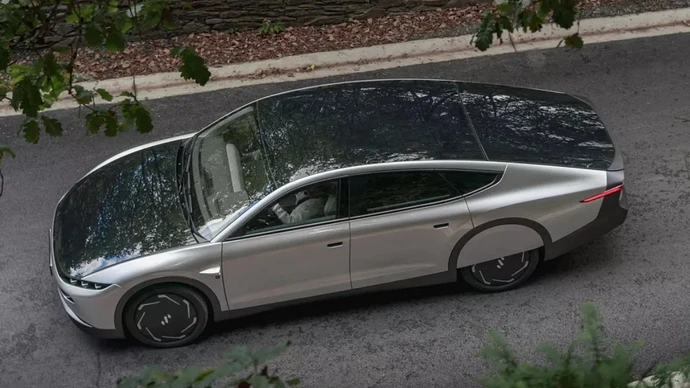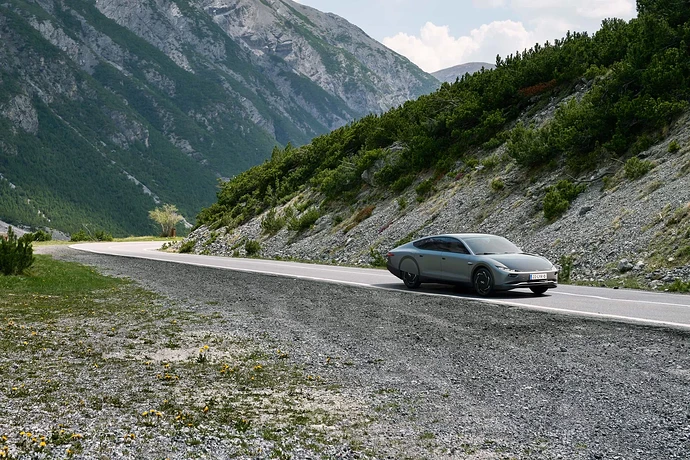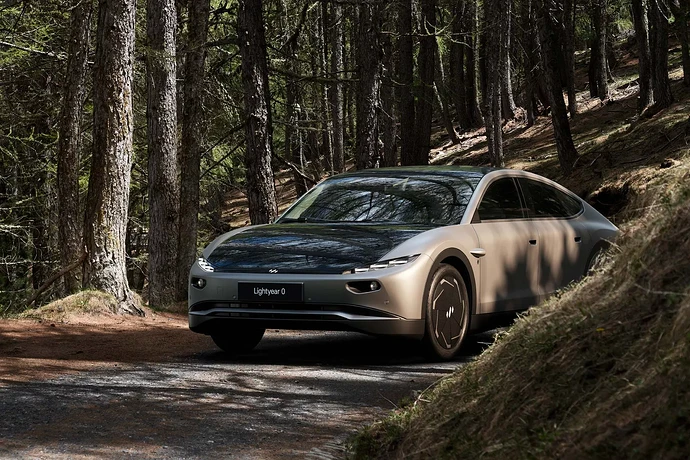“Starting with solar charging roofs and other body parts, we transform car exteriors into energy sources. This technology enhances vehicle range, reduces charging needs, increases driving freedom, and alleviates grid congestion.” by lightyear company
Manufactured by the Dutch startup Lightyear, this innovative car is the first production car in the world to feature integrated solar panels, making it a true solar electric vehicle (SEV). With an ambitious mission to revolutionise the way we think about mobility, Lightyear aims to combine clean energy, cutting-edge technology, and luxury design in a way that has never been done before.
The company’s first model, the Lightyear 0, is priced at around €250,000 ($300,000).
What do they bring on the road?
1. Solar Panels Integrated into the Bodywork
The most remarkable feature of the Lightyear 0 is its solar panel roof. This car is equipped with 5 square meters of solar panels integrated into the bodywork. These solar cells can generate up to 70 km (43 miles) of range per day under optimal sunlight conditions. While it may not eliminate the need for charging entirely, it dramatically reduces the dependency on traditional charging infrastructure.
2. Electric Powertrain with Exceptional Efficiency
The Lightyear 0 is powered by a highly efficient 4-wheel drive electric powertrain. The car uses 4 in-wheel motors to optimize power distribution, resulting in better traction and more efficient energy usage.
The total output from the four motors is 106 kW (141 hp), which allows the car to accelerate from 0-100 km/h (0-62 mph) in about 10 seconds.
3. Impressive Range & Charging Capabilities
The Lightyear 0 boasts a range of 725 km (450 miles) on a full charge (WLTP), which is exceptional for an electric car in its class. The car comes with a 60 kWh battery pack that provides enough energy for long trips without constantly needing to recharge. For convenience, the car supports fast charging and can be charged to 80% in around 35 minutes.
4. Sustainable Materials and Design
Lightyear has prioritised sustainability throughout the design and manufacturing process. The Lightyear 0’s body is made from lightweight, sustainable materials including carbon fiber and aluminum, which not only enhance efficiency but also reduce the vehicle’s environmental impact.
Inside, the car features a minimalist design with a futuristic cockpit, showcasing a large touch screen, virtual mirrors, and a floating center console. The interior is crafted using high-quality, sustainable materials like recycled fabrics and eco-friendly leather alternatives, creating a luxurious yet eco-conscious experience.
5. Aerodynamic Efficiency
The car’s design is incredibly aerodynamic, with a coefficient of drag (Cd) of just 0.19—one of the lowest in the automotive industry. This is achieved through a combination of smooth, flowing lines, the use of lightweight materials, and an overall focus on reducing air resistance, which ultimately improves both range and efficiency.
What Do You Think?
Is the Lightyear 0 the future of electric vehicles, or is it simply a niche luxury product? How do you think solar-powered EVs will change the landscape of transportation? What your thoughts on this one? ![]()



